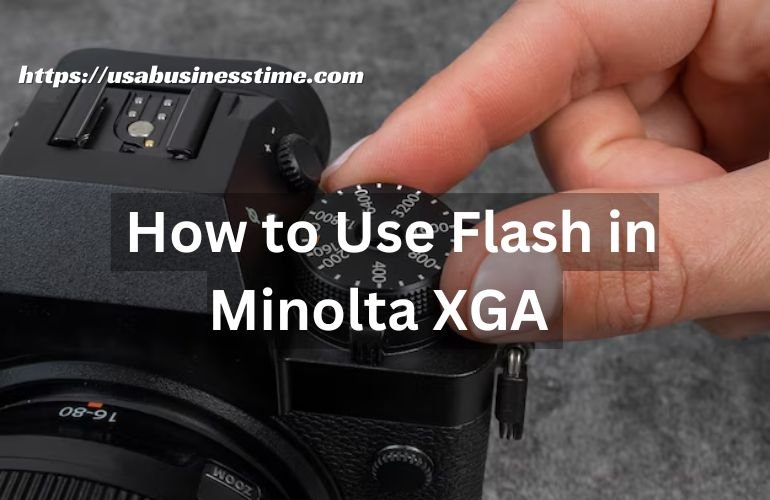The Minolta XGA camera, while vintage, remains popular for its robust build and manual controls. Using flash effectively with this camera can open new possibilities in both low-light and creative settings. This guide covers setup, techniques, troubleshooting, and accessory options to help users master flash photography with the Minolta XGA.
Table of Contents
Introduction
Using flash with the Minolta XGA camera can significantly enhance your control over lighting. When done right, flash illuminates details that might otherwise be lost in shadows or low light. This guide explores not only the basic setup but also advanced techniques and troubleshooting, helping you capture well-lit, vibrant photos.
Benefits of Flash Photography with Minolta XGA:
- Enhanced Lighting Control: Allows you to manage lighting intensity for various settings.
- Mastery Over Flash Modes: Key to capturing everything from sharp details in portraits to balanced light in outdoor shots.
- Common Challenges in Flash Photography: Includes avoiding overexposure, managing shadows, and synchronizing the flash with the camera.
1. Understanding Flash Basics in Minolta XGA
Built-in vs. External Flash Options:
- Built-in Flash: While convenient, it offers limited power and control.
- External Flash: Compatible with Minolta flashes like the Auto 320X, these provide more flexibility for controlling light direction, intensity, and coverage.
2. Types of Flash Modes Available in Minolta XGA
- Auto Mode: Automatically adjusts flash settings based on scene conditions; ideal for general use.
- Flash On Mode: Ensures the flash fires with each shot, useful for consistently low-light environments.
- Slow Sync Mode: Blends ambient and flash light, creating balanced exposures in darker scenes or nighttime photography.
3. Setting Up Flash for Minolta XGA
Step-by-Step Setup:
- Mounting the Flash: Slide the flash onto the hot shoe or connect it via a sync cable if using an off-camera setup.
- Manual Mode: Adjust the camera to manual to control shutter speed and aperture, typically starting at 1/60s for synchronization.
- Exposure and Intensity: Test initial settings with an aperture around f/8, adjusting based on results.
4. Flash Techniques for Enhanced Photography
- Bounce Flash: Aim the flash at a neutral surface (like a ceiling) to create soft, even lighting.
- Fill Flash: Adds light to shadowed areas in bright environments, useful in outdoor photography.
- Outdoor Use: Fill flash balances the background light and keeps subjects well-lit even in direct sunlight.
5. Adjusting Flash Intensity and Exposure Compensation
Intensity Control Tips:
- Prevent Overexposure: Use lower intensity settings in close-up shots.
- Boost for Low Light: Increase flash power in dim environments, balancing with ISO and aperture settings.
6. Using Flash Modes: When and How
- Auto Flash: Default for quick, no-fuss shots.
- Manual Mode: Provides control over every aspect of flash output, ideal for intricate lighting setups.
- Red-Eye Reduction: Best for portraiture to reduce eye reflection.

7. Flash Troubleshooting Tips
Common issues with flash include:
- Flash Not Firing: Check connections and battery power.
- Overexposure: Adjust flash power or increase aperture to reduce incoming light.
- Harsh Shadows: Try bounce or fill flash techniques to soften light.
8. Essential Flash Accessories for Minolta XGA
- Diffusers: Attach to the flash to soften light, creating a more natural look.
- Reflectors: Redirect light to fill in shadows and balance the scene.
- Wireless Triggers: Enable off-camera flash setups, allowing for versatile light positioning.
9. Advanced Flash Settings and Techniques
- Rear-Curtain Sync: Flash fires at the end of the exposure, capturing motion with a trail effect.
- High-Speed Sync: Enables faster shutter speeds than the typical flash sync, ideal for action photography.
10. Flash in Portrait Photography
Portraits often benefit from diffused flash, providing soft and flattering light. Adjust the angle of the flash and consider bounce techniques for a more natural look.
11. Flash Techniques for Macro Photography
Macro shots need careful light control:
- Illuminating Details: A lower-intensity flash can help capture fine details without overpowering the subject.
- Shadow Control: Use diffusers to minimize shadows in close-up shots.
12. Outdoor Flash Photography with Minolta XGA
Outdoor flash enhances subject clarity even in bright light. Use a fill flash to balance strong sunlight, keeping both the subject and background well-exposed.
FAQs
1. How do I adjust flash intensity?
Go to the flash settings and adjust the compensation.
2. Can flash be used outdoors?
Yes, fill flash works well to manage bright sunlight and shadows.
3. What are the best flash settings for low light?
Use Slow Sync mode for blending ambient and flash lighting.
Conclusion
Using flash with the Minolta XGA unlocks various creative opportunities in different lighting conditions. Practice with modes, adjust intensity, and experiment with accessories for optimal results.











